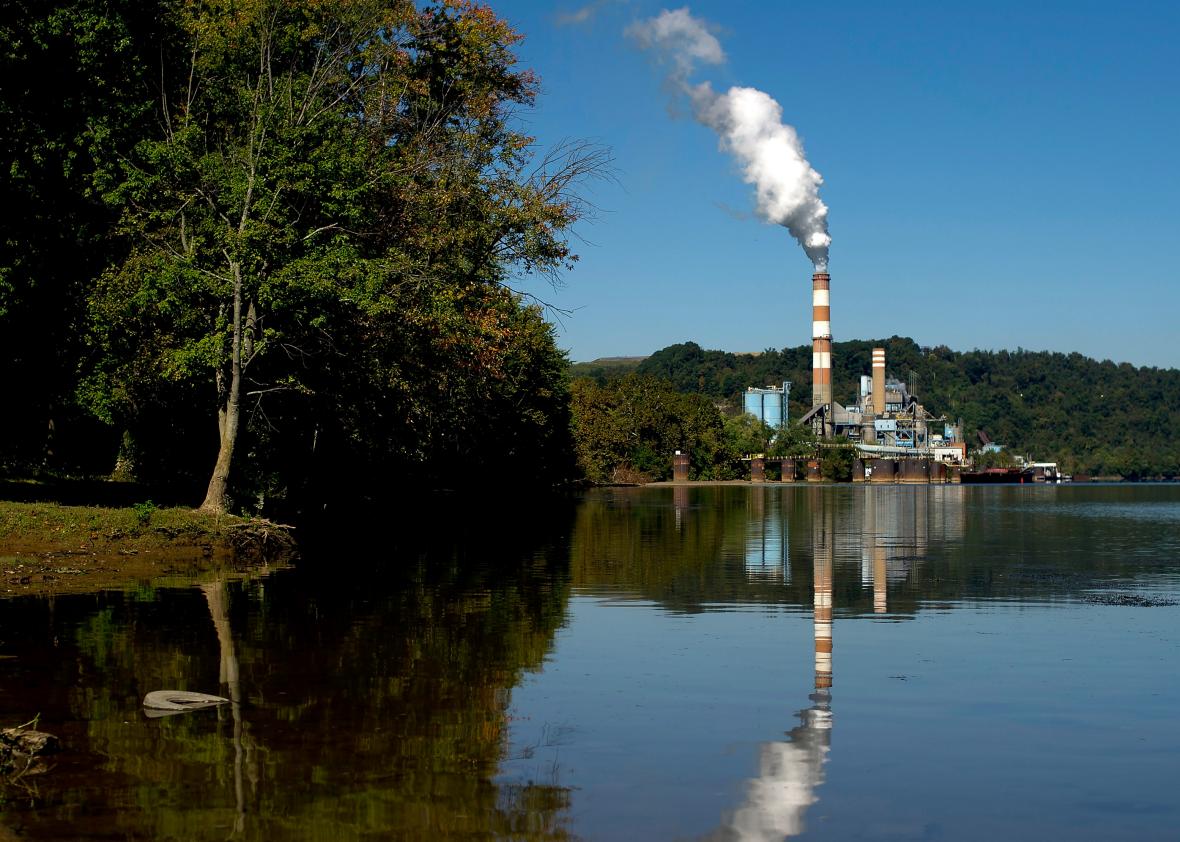Obama’s Climate Plan Is Basically Cap and Trade

Photo by Jeff Swensen/Getty Images
Five years ago, the U.S. Senate killed a major climate change bill that would have created a national cap-and-trade system for carbon emissions.
The bill’s defeat set back climate policy for years. Eventually, the Obama administration regrouped and pursued a new avenue: Environmental Protection Agency regulations on carbon emissions from the nation’s power plants. To many economists, this was an unfortunate fallback plan. Direct, administrative regulations can be more costly than market-based systems like cap and trade, which allow polluters to distribute the burden of cutting emissions more efficiently while achieving the same overall reductions.
But for Obama, the EPA rules had one decisive advantage over cap and trade: He could implement them via executive order, and Congress couldn’t stop him.
On Monday, Obama announced the new regulations, and policy wonks got to work reviewing the language of the 1,560-page Clean Power Plan. They found something surprising. Not only do the EPA regulations allow states to set up carbon trading markets, as many analysts had anticipated. They essentially make cap and trade the default mechanism for states that don’t want to comply.
The overriding theme of the Clean Power Plan is state-level flexibility. The EPA is telling every state how much it needs to cut its carbon emissions from power plants, but it isn’t telling them exactly how to do it. Rather, each state will be required to come up with its own plan, which could include anything from shuttering coal plants to subsidizing renewables to imposing “fees” on polluters. (As the National Journal’s Ben Geman points out, that’s a more delicate way of saying a carbon tax.)
You can see the various state requirements in this helpful infographic from Climate Central:
One of the options that gets the most attention in the rules is emissions trading. Pundits had originally anticipated that cap and trade might play a prominent part in the EPA regulations. But the 2014 draft proposal didn’t seem to push trading as a favored option, and the talk died down. The final rule, however, actively promotes it as an especially cost-effective way for states to meet the mandate and provides several suggestions for how to go about it. States can join existing regional carbon markets, like the ones in California and the Northeast. They can create new ones. Or they can set up their own in-state trading schemes.
In explaining the newfound emphasis on trading, the EPA cited “multiple stakeholders” asking for trading mechanisms in the public comment period for the draft proposal.
Republicans were, of course, lined up to oppose Obama’s plan even before he announced it. Jeb Bush on Sunday called it “unconstitutional” and said he expects the courts to overturn it. And as early as March, Sen. Mitch McConnell called on governors to refuse to comply. No doubt many will do just that.
And what happens when they do? According to the rule, states that fail to submit their own plans to meet the EPA requirements will be subject to a federally imposed plan instead. That plan amounts to—you guessed it—a version of cap and trade.
The federal plan is a little different from the national cap-and-trade system that the Senate shot down in 2010, as Bloomberg Business explains. In short, the EPA would restrict emissions from the state’s power plants but allow them to trade credits with power plants both in their own state and elsewhere in the country. The effect would be to create a national emissions trading market among power plants without any new interstate agreements, circumventing the need for buy-in from noncompliant state governments. From the Bloomberg Business article:
“It’s clear that what they’re trying to do—without establishing a federal cap-and-trade program—is set up a plan that has a very strong likelihood of becoming a de facto federal cap-and-trade program,” said Andre Templeman, managing director of the carbon-markets consultancy Alpha Inception LLC.
Republican leaders may well bridle at an executive action that results in an emissions scheme not so different from the one they defeated in 2010. Then again, if Republican leaders hated the idea of cap and trade so much, maybe they shouldn’t have come up with it in the first place.

